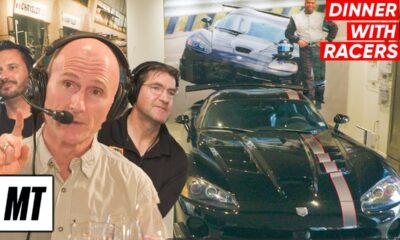
Photo: Mike Levitt/IMSA
The four manufacturers and associated teams taking part in the competition debut of the LMDh platform are putting in the “down payment” that will be rewarded with the formula’s long-term success according to Chip Ganassi Racing managing director Mike Hull.
CGR, along with Action Express Racing are fielding factory Cadillac V-LMDh cars in the IMSA WeatherTech SportsCar Championship’s new GTP class, alongside other works efforts from Acura, BMW and Porsche.
With more manufacturers, such as Lamborghini, on the horizon for 2024 and beyond, Hull believes the convergence of top class sports car racing, which will see LMDh cars also compete in the FIA World Endurance Championship, has created a resurgence for the sport.
“It’s terrific to be racing in this category, GTP,” Hull said.
“The open wheel racing in the United States and closed wheel racing, sports car racing, in America, went through this period of time where there were two factions. They’ve come back together.
“IndyCar is starting to come out of the dilemma it was in finally, and sports car racing certainly is doing the same thing in a very positive way globally.
“I think what we’re seeing here at Daytona is exactly what’s going to happen for the future.
“This is like the down payment, what we’re seeing this year.
“By 2025 or 2026, not only are you going to be fighting for 61 positions in the garage area and in pit lane, but the quality of the teams are going to be way, way higher than it is today.
“The complexity that we’re dealing with today will be standard fare by then.
“Anytime that you start with a new race car, you forget all the things that you have to do to make it run. And so that’s what we’re all going through in any category that that happens.”
While going through teething pains of rolling out the new hybrid-powered formula, Hull said he’s excited by the level of technology it brings to the paddock.
Each LMDh car is equipped with an electric motor capable of producing 50 kW (67 horsepower) along and a regenerative capacity of 180 kW (241 horsepower).
The Bosch-supplied MGU is paired with a battery developed by Williams Advanced Engineering, installed in the bell housing of an Xtrac gearbox.
“What I like about where we’re racing now with this category of car, the GTP car, is the technology that it represents going forward,” Hull said.
“Going forward, we need to embrace alternate technologies if we want to continue racing cars and have manufacturers help us do that.
“That’s a big deal. The cars are complex. The reality is the complexity is secondary to the message. That’s what I like about it.”
CGR’s global director of operations Mike O’Gara admitted that the hybrid element is his “most and least favorite” part of the program.
“I started at CGR in 2004 as a race engineer,” he said. “The engineer in me loves the new technology and trying to figure that out.
“Now that means more people, more computers, more wires, so that adds a level of complexity.
“One thing we’ve done over the 30-plus years that Chip Ganassi Racing has existed is figure things out better than everyone else.
“That’s a good challenge for us is to we just have to be a little bit better than everyone and we’re working hard to do that in every way on this car.
“The technology is what definitely intrigues me the most about it.”
CGR has one of the largest operations in the Daytona paddock, with members of its future WEC crew working alongside its full-season WeatherTech Championship entry and additional support crew, including engineering staff from Cadillac and chassis constructor Dallara.
“What we represent are 150 or 160 people [at CGR] that are working to make this a success at Daytona,” said Hull.
“It’s all about those people, it always has been and always be at Chip Ganassi Racing. We’re really happy about that.
“That’s what creates results and goes back to what you said at the beginning about winning here multiple times.
“We’ve won with different people doing the same jobs. We’ve had one goal in common and that is to work together to win.”




















